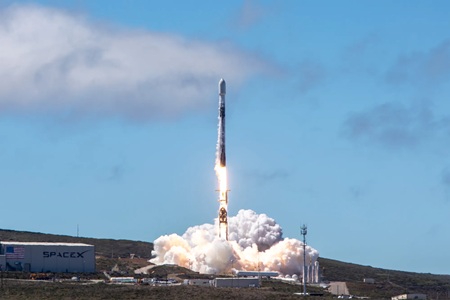NASA Launches TRACERS Mission Aboard SpaceX Falcon 9 Rocket

Riding along with TRACERS aboard the Falcon 9 were NASA’s Athena EPIC, PExT and REAL missions, three small satellites to demonstrate new technologies and gather scientific data.
NASA’s TRACERS mission was launched aboard a SpaceX Falcon 9 rocket from Vandenberg Space Force Base in California. The TRACERS spacecraft will explore the interaction between Earth’s magnetic field and solar activity, providing insights into space weather.
The mission involves two TRACERS satellites orbiting through Earth’s polar cusp to study magnetic reconnection events caused by collisions between the Sun’s magnetic field and Earth’s magnetosphere. By collecting measurements, the satellites aim to understand the dynamic process of space weather.
NASA Administrator Sean Duffy expressed pride in launching TRACERS to advance space science research. The mission will enhance understanding of the Earth-Sun connection and contribute to future space exploration endeavors.
Ground controllers quickly established communication with the TRACERS spacecraft after launch. Engineers will conduct system checks before the satellites start their year-long mission to study solar particles and their impact on Earth’s magnetic shield.
David Miles, TRACERS Principal Investigator, praised the successful launch and emphasized the mission’s importance in studying Earth’s magnetosphere.
In addition to TRACERS, other NASA missions on the Falcon 9 include Athena EPIC, PExT, and REAL, focusing on testing new technologies and collecting scientific data.
Athena EPIC will demonstrate a commercial satellite architecture, PExT will test a polylingual terminal, and REAL will study energetic electrons in the atmosphere.
The TRACERS mission is led by the University of Iowa with support from various academic partners. Managed by NASA’s Heliophysics Explorers Programme, the launch was part of the Venture-class Acquisition of Dedicated and Rideshare contract.




